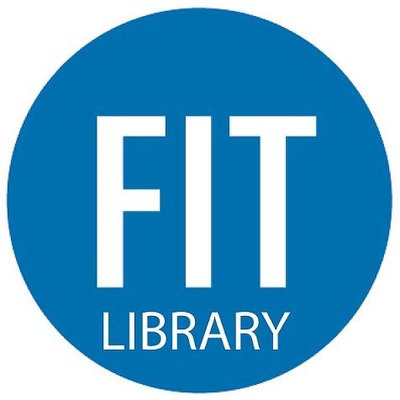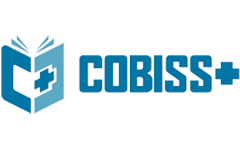Bioaccumulation of cadmium and quantitative characterization of proteins ofSaccharomyces cerevisiae
DOI:
https://doi.org/10.61841/hhqhj243Keywords:
Bioaccumulation, cadmium, Saccharomyces cerevisiae, proteinsAbstract
Bioaccumulation using microbes is an efficient strategy for heavy metal removal due to its low cost, high efficiency, and ecofriendly nature. Recent inventions have been made to understand metal-microbe interaction and their application for metal accumulation. Yeast, being a typical eukaryote, has many essential features similar to those of higher eukaryotes and can be used to investigate various aspects of their cell biology. Saccharomyces cerevisiae can be used as a model system because of easy cultivation using normal media. It is therefore planned to investigate the bioaccumulation of cadmium by S. cerevisiae. Molecules that participate in the binding of metal ions have been identified and found in several species of yeast and other fungi. Proteins are able to transport a charged heavy metal ion across biological membranes. Metallothioneins, like proteins, are important mediators that help in metal uptake and hence accumulation, especially for cadmium. This paper attempts to present the correlation between cadmium concentrations in the environment and accumulation by S. cerevisiae, along with the involvement of metal-binding proteins.
Downloads
References
1. Martins B.L., Cruz C.C.V., Luna A.S. et al., Biochem. Eng. J., 2006, 27(3), 310-14.
2. Turgay T. et al., Biosorption of Cadmium Ions from Aqueous Solution onto Non-living Lichen Ramalina Fraxinea Biomass, Clean: Soil, Air, Water, 2009, 37, 249-255.
3. Zouboulis A.I., Loukidou M.X., Matis K.A., Biosorption of toxic metals from aqueous solutions by bacteria strains isolated from metal-polluted soils, Process Biochem., 2004, 39, 909–916.
4. Iyer A., Mody K., Jha B.K., Biosorption of heavy metals by a marine bacterium, Marine Poll. Bull., 2005, 50, 340–343.
5. Kim S.U., Cheong Y.H., Seo D.C., Hur J.S., Heo J.S., Cho J.S., Characterisation of heavy metal tolerance and biosorption capacity of bacterium strain CPB4 (Bacillus spp.), Water Sci. Technol., 2007, 55, 105–111.
6. Alluri H.K., Ronda S.R. et al., African J. of Biotechnol., 2007, 6(25), 2924-931.
7. Ramasamy K., Kamaludeen S., and Parwin B., “Bioremediation of Metals: Microbial Processes and Techniques,” in S. N. Singh & R. D. Tripathi (eds.) Environmental Bioremediation Technologies, Springer Publication, NY, 2006, 173-187.
8. Bruins R.M., Kapil S., and Oehme W.F., “Microbial resistance to metals in the environment,” Ecotoxicological and Environmental Safety, 2000, 45(2), 198-207.
9. Sharma P.K., Balkwill D. L., Frenkel A., and Vairavmurthy M.A., A new Klebsiella plantticola strain (Cd-1) grows anaerobically at high cadmium concentrations and precipitates cadmium sulfide, Applied and Environmental Microbiology, 2000, 66 (7), 3083-3087.
10. Wang C.L., Ozuna S.C., Clark D.S., Keasling J.D., „A deep-sea hydrothermal vent isolate, Pseudomonas aeruginosa CW961, requires thiosulfate for Cd2+ tolerance and precipitation,‟ Biotechnology Lett, 2002, 24 (8), 637- 641.
11. Gavrilescu M., Removal of heavy metals from the environment by biosorption,” Engneerng Life Science, 2004, 4, 219-232.
12. Brady D. and Duncan J.R., Enzyme Microbiol., 1994a, 16, 633-8.
13. Goksungur Y., Uren S., and Guvenc U., Bioresour. Technol., 2005, 96, 103-9.
14. Kapoor A. and Viraraghavan T., Bioresour. Technol., 1995, 53, 195-206.
15. Peregol P. and Howell S.B., Toxicol. Appl. Pharmac., 1997, 147, 312-8.
16. Brady D. and Duncan J.R., Appl. Microbiol. Biotechnol., 1994, 41, 149-154.
17. Wang J. and Chen C., Biotechnology Advances, 2006, 24, 427-51.
18. Blackwell K.J., Singleton I., and Tobin J.M., Appl. Microbiol. Biotechnol., 1995, 43, 579-84.
19. Avery S.V. and Tobin J.M., Appl. Environ. Microbiol., 1992, 58, 3883-9.
20. Soares E.V., Duarte A.P.R.S. et al., Appl. Microbiol. Biotechnol., 2002, 58, 836-41.
21. Huang C.P., Huang C.P., and Mbrehart A.L., Water Res., 1990, 24, 433-439.
22. Vanaja M., Charyulu NVN, and Rao KVN, Proc. Ind. Natl. Sci. Acad., 1989, 55, 489-94.
23. Steward F.C. and Barber J.T., Amer. J.Bot. 1965, 52(2), 155-164.
24. Steward F.C. and Barber J.T., Ann. N. Y. Acad. Sci., 1964, 121(2), 525-531.
25. Bharti N. and Singh R.P., Phytochem., 1993, 33, 531-534.
26. Lodish H.F. and Rothman J.E., Sci. American, 1979, 240, 38-53.
27. Walker N.A., Enc. of Plant Physiol., New-Series, Springer, Verlog, Berlin Heidelberg, New York, 1976, 2, 3-11.
28. Singer S.J. and Nichalson G.L., Science, 1972, 175,720-731.
29. Sood I.S., Sindhu R.S., and Sharma K.K., Poll. Res., 1994, 13(4), 331-343.
30. Sood I.S., Sindhu R.S. et al., Perpective in Pteridology, Present and Future, 1992, 14, 361-64.
31. Bhardwaj S., Ph.D. Thesis submitted to M.D.S. University, Ajmer (Raj.), 1992.
32. Blundell T.L. and Jenkins I.A., Chemical Soci. Rev., 1977, 6(2), 139-71.
33. Leeman S.G., Keung W.M., and Riordan J.F., J. Inorg. Biochem. USA, 1986, 26(2), 93-106.
34. Markovac J. and Goldstein G.W., C. Nature, 1988, 334, 71-73.
35. Kumar V, Sharma AK, Rajput SK, Pal M, Dhiman N. Evaluation of phytochemical, toxicological, and pharmacological profiles of Eulaliopsisbinata leaf extracts. Toxicol Res. 2018; 7: 454-464
36. Kumar V., Pal M., and Dhiman, N., Determination of sun protection factor in different extract of Eulaliopsisbinata, Plant Archives, 2019; 19(2), 185-187
37. Kumar V, Mohan C, and Kumari S, “Synthesis, characterization, and antibacterial activity of the Schiff bases derived from thiosemicarbazide, 2-acetyl thiophene, and thiophene-2 aldehyde." International Research Journal of Pharmacy, 2018, 9(7), pp. 153-158
38. Brierley C.L., J. Geomicrobiol., 1990, 8, 201-223.
39. Baker A.J.M. and Brooks R.R., J. Ecol. and Phytochem.; Biorecovery; 1989, 1, 81.
40. Verma R.S., Rao T.V.G., and Prasad R., Biochem. Biophys. Act; 1984, 778, 289.
41. Lowry O.H., Rosebrough N.J., Farr A.L., and Randall R.J., J. Biol. Chem., 1951, 193, 265.
42. Dewhurst F., J. of Chem. Edu., 1969, 46(12), 864-865.
43. Weber K. and Osborn M., J. Biol. chem., 1969, 244, 4406.
44. Liu X.F., Supek F., Nelson N. et al., J. Biol. Chem., 1997, 272, 11763-11769.
45. Yu J. X., Tong M., Sun X. M., Li B. H., Cystine-modified biomass for Cd(II) and Pb(II) biosorption, J. Hazard. Mater. 2007, 143, 277-284.
46. Li Z.S., Lu Y.P., Zhen R.G. et al., Proc. Natl. Acad. Sci. USA, 1997, 94, 42-47.
47. Li Z.S., Szczypka M., Lu Y.P., Zhen R.G. et al., J. Biol. Chem., 1996, 271, 6509-517.
48. Fashola M., Ngole-Jeme V., and Babalola O., Heavy metal pollution from gold mines: Environmental effects and bacterial strategies for resistance,” International Journal of Environmental Research and Public Health, 13, 1047, 2016.
49. Inouhe M., Sumiyoshi M. et al., Plant Cell Physiol., 1996, 37(3), 341-46.
50. Higham P.D., Sadler J.P., and Scawen D.M., “Cadmium-binding proteins in Pseudomonas putida: pseudothioneins,” Environmental Health Perspective, 65(3), 5-11, 1986.
Downloads
Published
Issue
Section
License
Copyright (c) 2020 AUTHOR

This work is licensed under a Creative Commons Attribution 4.0 International License.
You are free to:
- Share — copy and redistribute the material in any medium or format for any purpose, even commercially.
- Adapt — remix, transform, and build upon the material for any purpose, even commercially.
- The licensor cannot revoke these freedoms as long as you follow the license terms.
Under the following terms:
- Attribution — You must give appropriate credit , provide a link to the license, and indicate if changes were made . You may do so in any reasonable manner, but not in any way that suggests the licensor endorses you or your use.
- No additional restrictions — You may not apply legal terms or technological measures that legally restrict others from doing anything the license permits.
Notices:
You do not have to comply with the license for elements of the material in the public domain or where your use is permitted by an applicable exception or limitation .
No warranties are given. The license may not give you all of the permissions necessary for your intended use. For example, other rights such as publicity, privacy, or moral rights may limit how you use the material.
















